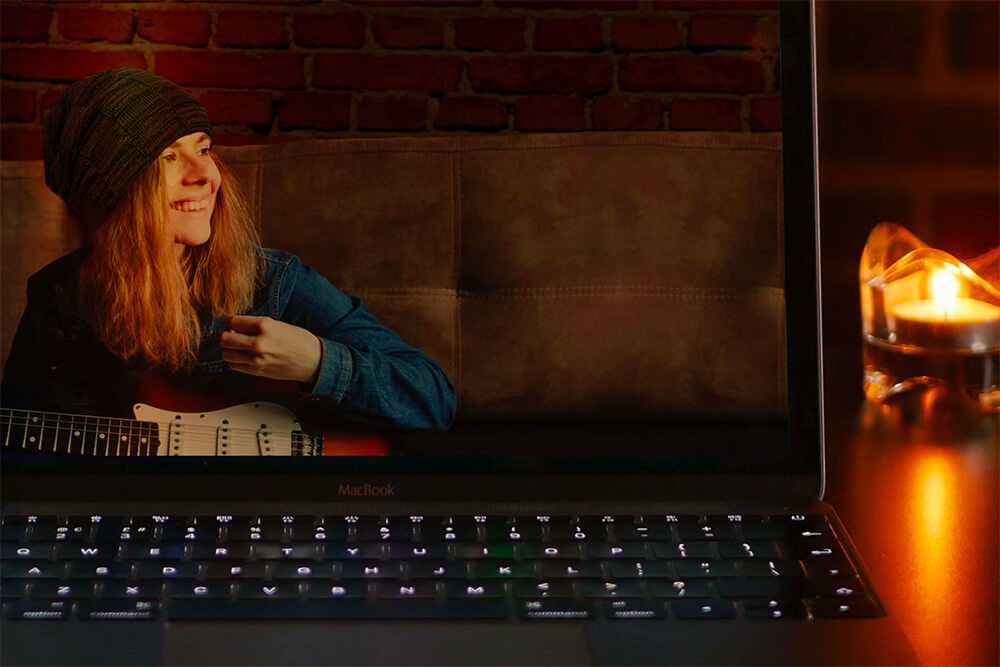Something that is often skipped over in the early stages of learning, guitar technique will affect all aspects of your playing!
Don’t take shortcuts by breezing over the basics.
Make your playing the best it can be by improving your guitar technique!
Fundamentals
The most logical place to start when wanting to improve your guitar technique is with the fundamentals, as many players skip over these in order to jump to playing their favourite songs!
This is one of the major hurdles I find as a guitar tutor when taking on a new student who is mainly self-taught, or has come from another tutor who doesn’t place a large focus on establishing the fundamentals.
When I say fundamentals, I’m talking about where in the fret do you place your fingers, are you standing your fingers up tall on the fingertips or are they lying over slightly, are you holding the guitar at the correct angle or are you tilting it to get a better view of the fretboard, and where are you placing your thumb on the back of the guitar neck?
You’d be surprised at how many new students that come to me don’t know the answer to some or all of those questions!
When fretting a note, you want to be placing your fingertip just behind the metal fret. Not on top of the fret, not in the middle, and not far back.
This is where the best sound will be produced and won’t require as much pressure to squeeze the note to the point of producing a clear sound.
There are some exceptions to this rule however, such as when playing chords you sometimes simply just won’t have enough room to place all of your fingers behind the fret.
Think of an open A major chord for example, with all three fingers in the second fret.
Some will have to be more in the middle or on the ‘incorrect’ side of the fret. This is where your other fundamentals will kick in and allow you to produce a clear sound.
When playing single notes or chords, it is very important that you are standing your fingertips up tall on the fretboard, as if they are lying down flat they will block the adjacent strings and prevent them from ringing clearly.
This will become even more important when playing chords, as you will be required to have up to six strings ringing clearly at a time. Not only should you aim to have the fingers standing up tall on the fingertips, but also to have ‘square’ knuckles, which will produce a good shape in the fingers to help steer clear of any adjacent strings.
In addition to all of these tips mentioned above, you should also ensure that you aren’t tilting the guitar at an angle to allow a better view of the fretboard, as this will change the angle of your wrist and cause your fingers to lie down over the strings.
If you are doing this this could mean that your guitar is too big for you, your chair is at an inappropriate height, or that you need to trust your fingers a little more and work off of ‘feel’.
Scales
The most important part of this article is what you have (hopefully) just read, as there is no point in moving on to playing scales or other pieces if you haven’t got the fundamentals of fretting technique correct.
These are skills that will carry forward to all aspects of guitar playing, so be sure to sit down and spend a decent amount of time on all of the above mentioned points, until they are at the point of being habit and not something that you have to think about as much.
Once you are at this point however, it’s time to move onto some scales! Scales are an essential part of learning any instrument, and will help you to build upon not only your technical abilities but also expand on your theory knowledge.
The most logical place to start is with the Major scale, as this will feed into all aspects of music theory and playing.
Start off by learning the Major scale in one static position, with the root note on the 6th string, then try another static position with the root note on the 5th string. For example, for a G Major scale, start off by playing this off of the 3rd fret on the 6th string, then move into a separate position off of the 10th fret on the A string to get two different positions of the same scale.
Once you have got the hang of these two positions, learn this scale all over the guitar neck, learning how to connect each position, and of course try in lots of different keys.
You can also do the same for the Natural Minor scale, Minor Pentatonic scale, Major Pentatonic scale, and the modes of the Major scale!
Chord Transitions
Another thing that I see some of my beginner students struggle with is their chord transitions, especially when trying to play a song from start to finish without any gaps between these.
One mistake that I see many beginners make is that they practice putting these gaps in during their personal practice sessions, which makes it even harder to get rid of later! Some people even have a consistent gap between each chord change (for 1 or 2 beats for example).
An exercise that I will often make people do is to impose a rule that their strumming hand is not allowed to stop strumming, even if that means that they have to strum the open strings because the fretting hand isn’t ready yet.
This constant strumming will keep the pulse of the song going and keep them accountable for making the chord changes in time, and after trying this for a little bit will often force those slow chord changes into place.
The next level up from here is to play the song slowed down through a speaker, at a speed that is achievable enough for them to play along to, and give them that consistent pulse to lock into and make those chord changes in time.
Tip – To slow songs down search the song on YouTube, click on the settings cog on the video, click on ‘playback speed’, in the top right corner click on ‘custom’ (must be on a laptop or computer not a mobile device/table to be able to select a custom speed), then use the sliding bar to slow down to a speed within 5%! If you are on a mobile device/tablet, you have the option of 75%, 50% or 25%, although in many cases even 75% may be too slow.
Hammer-Ons, Pull-Offs
Another area that is often messy with beginner or intermediate guitarists is in the articulations, that is in their hammer-ons and pull-offs.
When using these techniques you should aim to have an even velocity across using these techniques so that the notes ring just as clear even though you aren’t plucking them again, ensuring that you are using enough strength to create a smooth sound.
If this sounds like something that applies to your playing, try to just simply hammer-on between two different frets (1st to 3rd fret for example), starting slow and then speeding up, aiming to keep a smooth and consistent sound between all notes.
Try the same thing in reverse with pull-offs.











